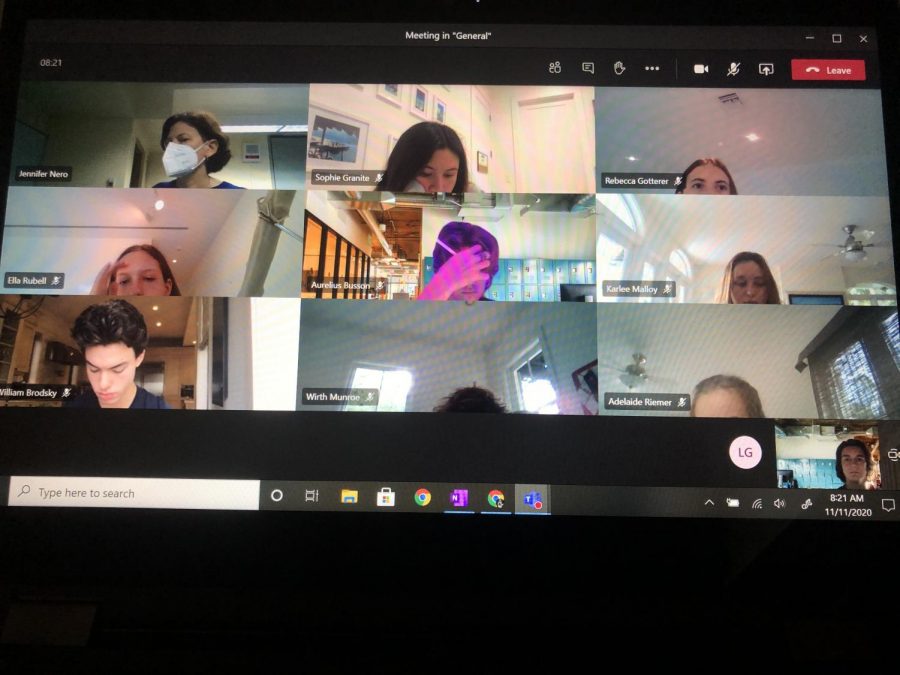REmote students face the challenges of hybrid learning
More stories from Jackson Mopsick '21
Across the United States, schools are reopening with CDC-approved health precautions such as constant mask-wearing and protocols in place in case a student tests positive for COVID-19.
Not all students are returning to school, however. As schools are once again holding in-person classes, some students have decided to stay remote, including 100 students who will be remaining remote for the rest of the semester at RE. For these students, remaining online has its benefits as well as its challenges.
When asked why they chose to remain remote, students at both RE and other schools in Miami cited safety as a chief concern. “I don’t feel safe going to school. I know staying home is a safer option for my family,” said Eliza Greenwald, a senior at Miami Beach Senior High School. Lily Kaplan ’22 remarked that she was staying home “for my mom because she has asthma, and we are trying to be careful.”
Students had other reasons to stay home aside from safety, however. Louis LaFontisee ‘21 noted that he stayed home in order to remain healthy before the sailing world championship. He stated, “We are required to have a negative test 72 hours before we come into the country because it is in Italy, so I didn’t want to take the risk.”
LaFontisee acknowledged that RE “has done a good job of emulating the atmosphere of Ransom online,” explaining that “Things like the routine assemblies let us keep connected with the school, and I think the return to campus has been a process that they have put a lot of effort into, so I am grateful for that.”
Students outside the RE community shared a similar point of view. “I don’t find it difficult to learn online. My teachers are doing a good job making an effort to make sure everyone learns even though it is harder through a screen.” said Greenwald.
RE teachers also shared a similarly positive sentiment about the virtual start to the school year. “I think we have made the online experience actually good,” commented Mr. Cooper.
Kaplan observed that she has also been “way more productive at home,” which is another factor that contributed to her decision not to return to campus this semester.
But the hybrid learning model that RE students and faculty have transitioned into since the reopening of school on Oct. 12 has also presented some unique challenges—particularly for the students who are remaining at home.
Though the hybrid model may be a much better learning environment for the students who returned to the classroom, some virtual students feel left out. When asked if she felt like teachers were paying more attention to the in-person students, Kaplan answered with a simple “yes.”
LaFontisee said his biggest problem was lack of human interaction. “Mainly I do not get to see people as much. Collaboration is more difficult,” remarked LaFontisee. Austin Charlton ‘20, an engineering student at Drexel University, echoed his sentiment and talked about his similar experience at the college level: “I can’t form new relations properly.”
In addition to the lack of interaction, Greenwald brought up screen time. “Screen time is very bad. You always hear from adults that screen time is very bad and [to] not spend that much time on your screen, but then you barely get a break. I had to get blue light glasses because I am getting headaches,” she said.
From the perspective of the teachers, the hybrid system is challenging in large part because it feels like teaching in two different ways at the same time. “It can be two different approaches to teaching,” said Mr. Greg Cooper, who teaches Social Science at the Upper School. “If I am teaching online, I am leveraging technology a lot more. If I am in person, I’m not using technology as much. The focus in person is more on the conversation, not as much on the technology. To do both at the same time is challenging. I think we are making it work, but it is challenging…It’s not easy to speak to both students at home and in person.”
Mr. Cooper also noted that the difficulty of “forming relationships with students that you don’t have relationships with already.” “We switched to virtual school three-quarters of the way through the year, so you knew your students already. Early in the year, it’s tough when you’re not informally interacting with them before and after class,” he said.
Still, Mr. Cooper noted that although it may be easier to have everyone online, students will not get the same education. “Everyone being online is easier, but I don’t think it is ideal,” he said. “I certainly enjoy having people in front of me rather than online. I feel like I am a much better teacher in person rather than online, so I do think there is a benefit to doing what we are doing rather than having everyone online.”
Jackson Mopsick '21 is a staff writer for the Catalyst.


